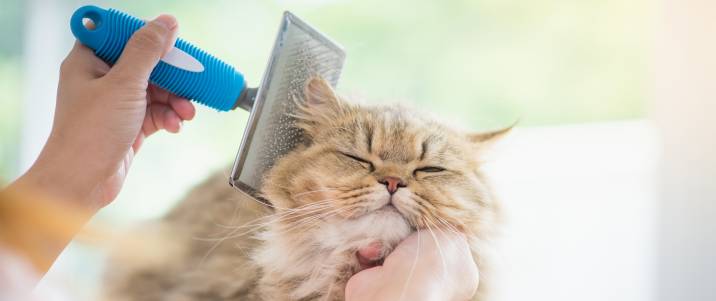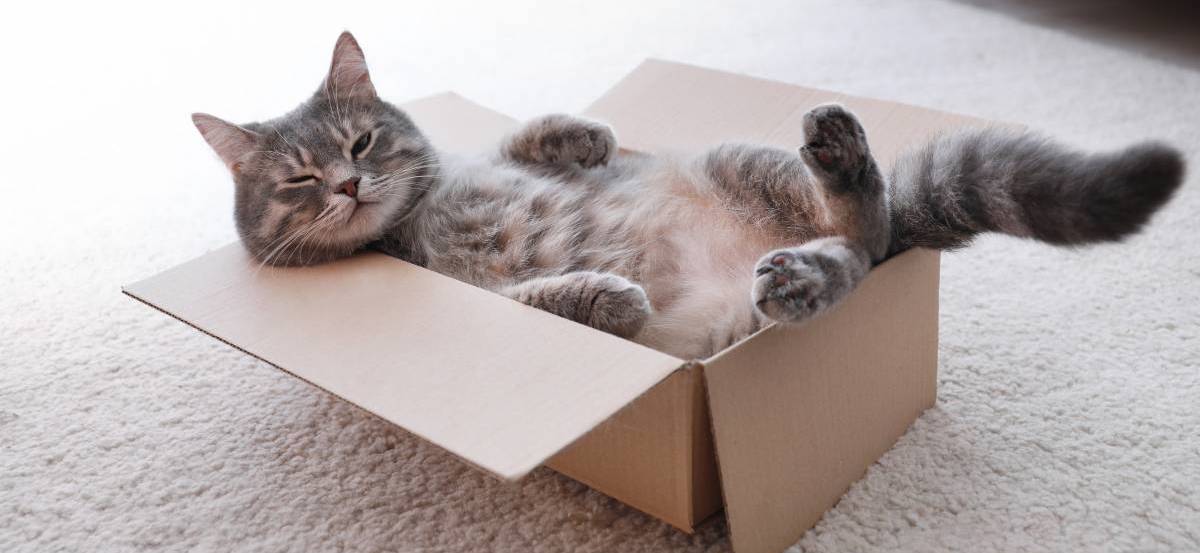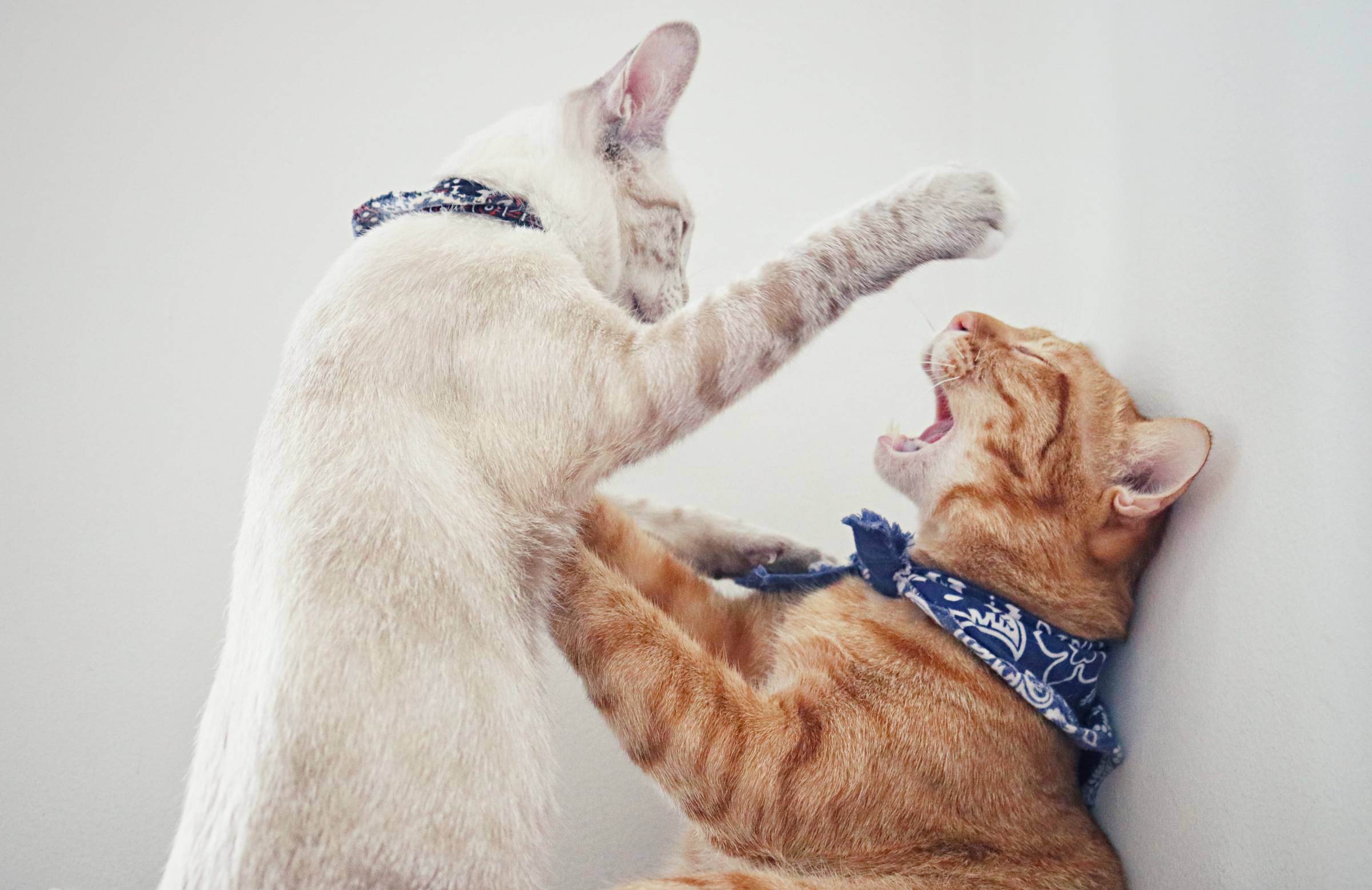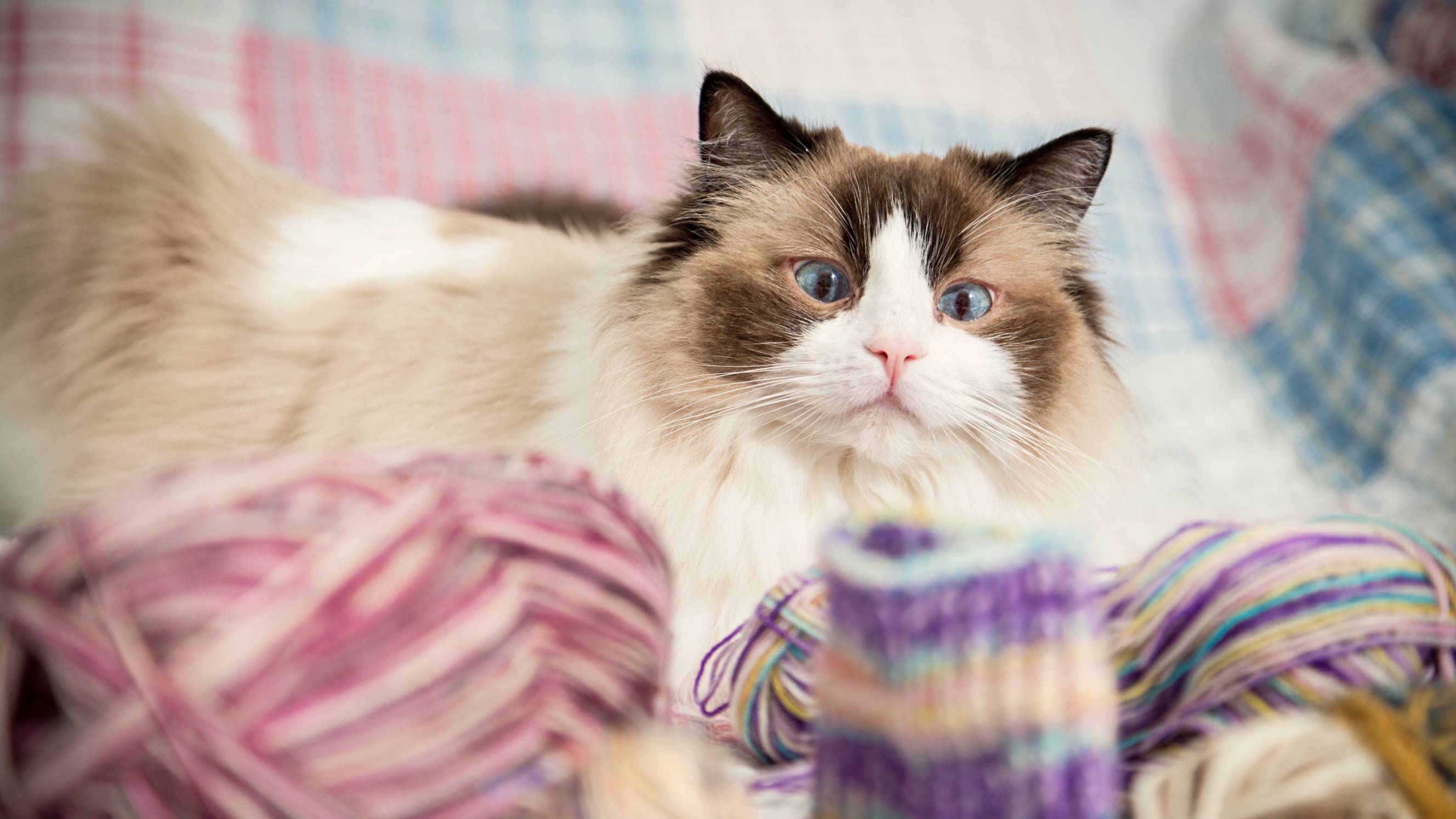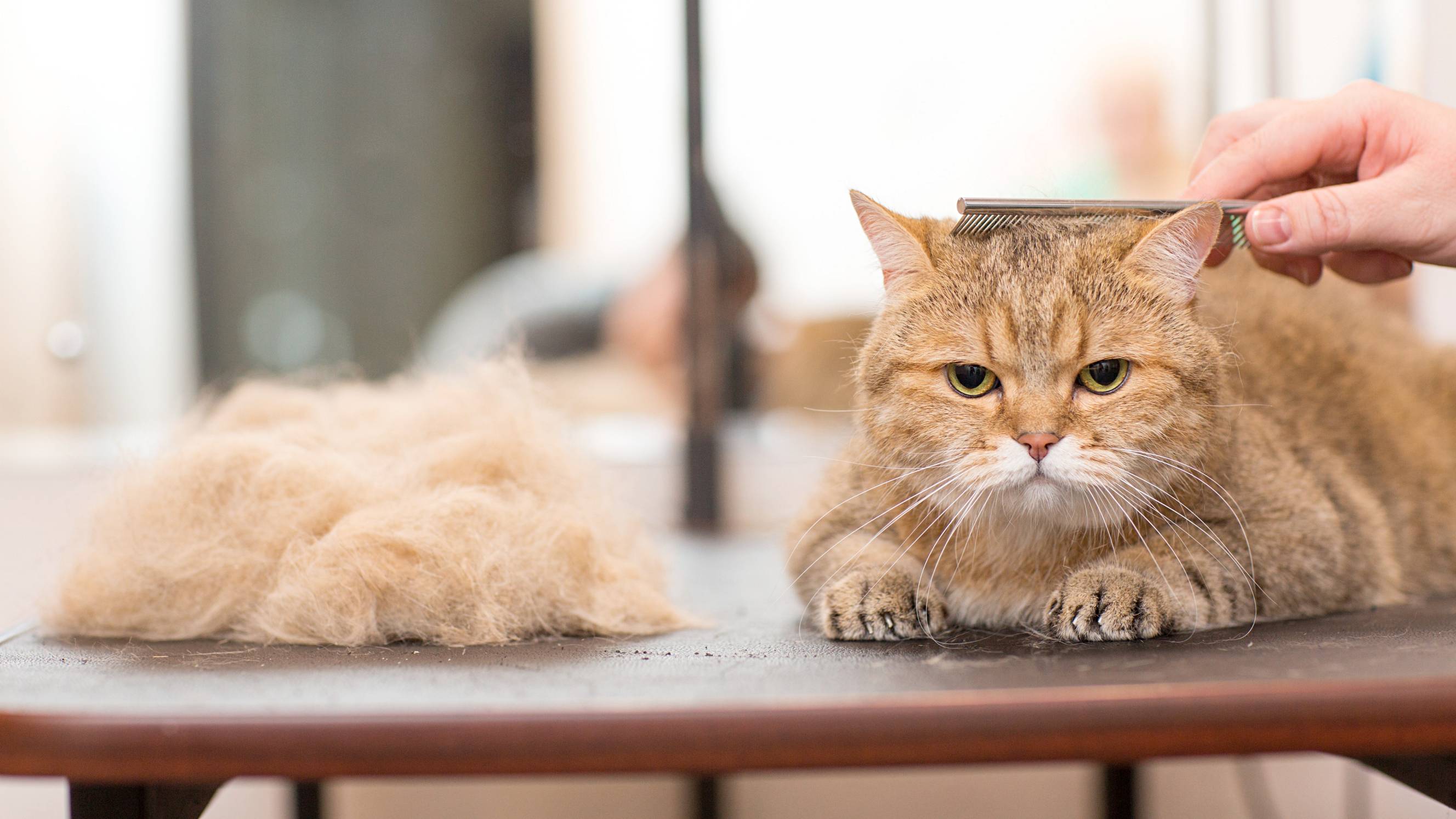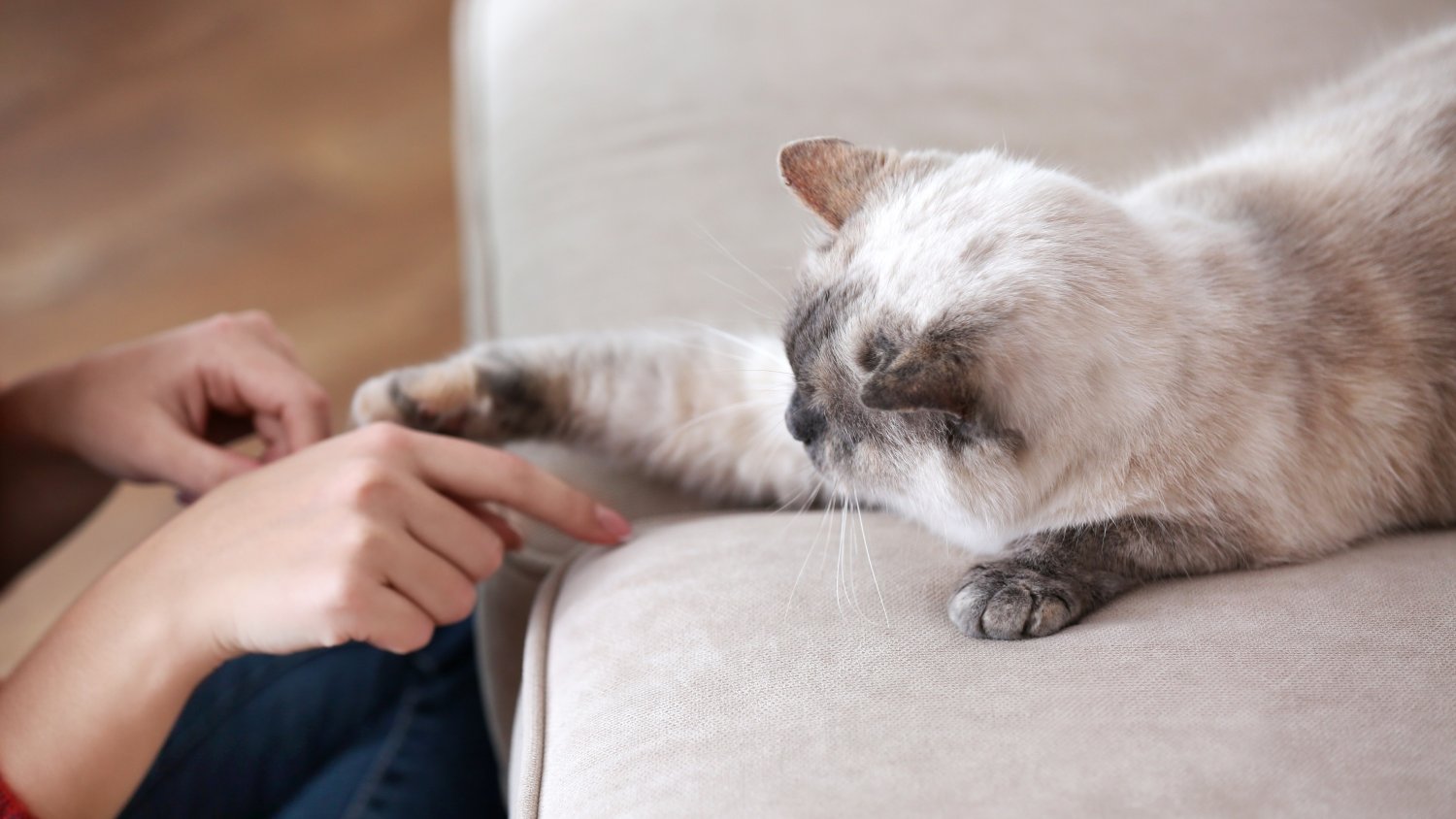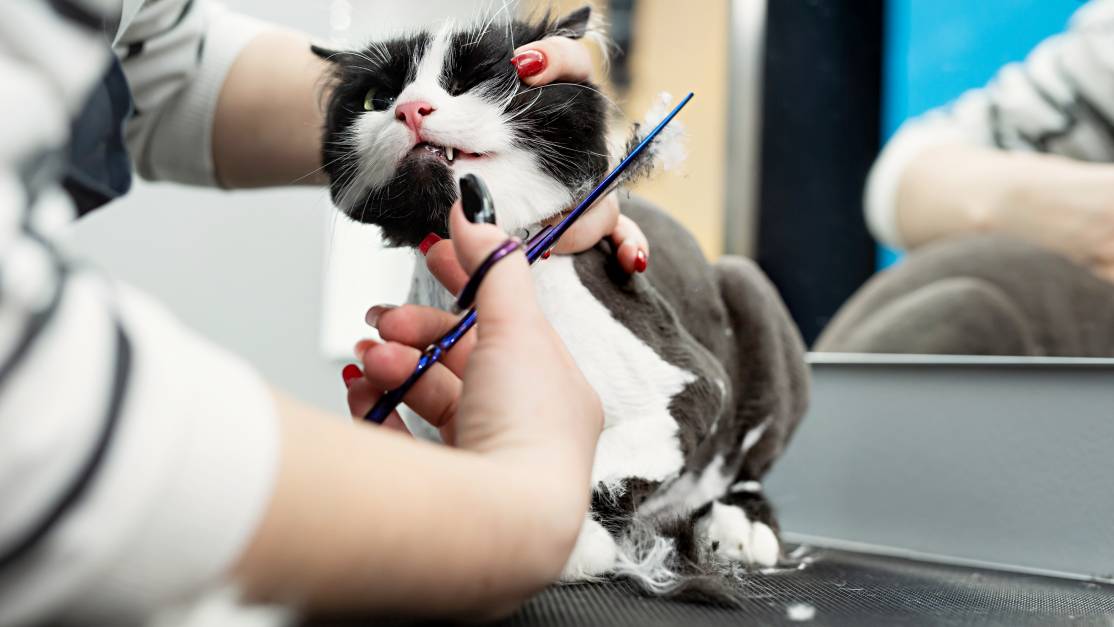- Home/
- Guides/
- Cat Grooming/
- How to Groom a Cat
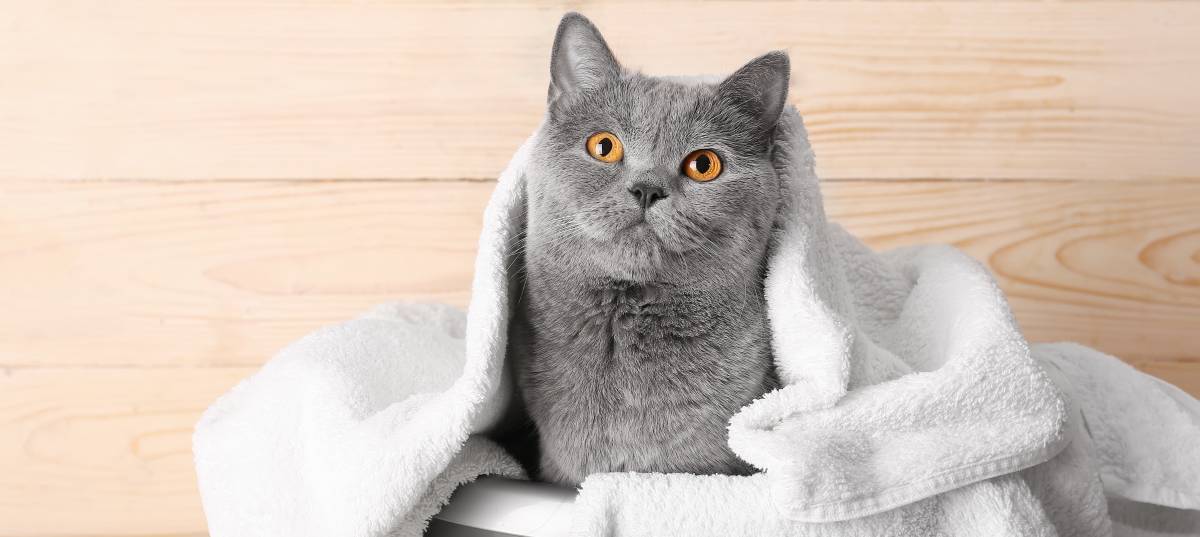
How to groom a cat at home
Here’s a detailed guide to grooming your furry feline.
Get help grooming your catLast Updated on
Did your kitty get herself into a mess, and now a bath is in order? While cats are known to be clean creatures since they groom themselves, the majority of cat owners will still find it necessary to give their furry feline full grooming for optimal skin health and fur maintenance.
Depending on your cat's temperament, grooming might not be easy. But a clean cat is a happy cat—and the steps we've outlined below will help you groom your cat at home.
Note: If you're still not confident about grooming your cat at home after reading this guide, professional cat grooming services are the best option. |
Tools for cat grooming
The good news is you don't need many tools and products when grooming a cat, and whatever you need can be used repeatedly. With all things in life, it's wise to invest in good quality products that will last a long time.
Nail clippers - to give those sharp claws a trim
Scissors - to remove matted fur and clean up around the ears and neck
Shampoo - to clean the fur, promote natural oils, and add a pleasant scent to your cat's coat
A large dry towel - for a post-wash drying
Hairdryer - to make the drying job much easier, if your cat doesn't mind
Mat - to prevent slipping in the sink, tub, or bath
Thick rubber gloves - to protect yourself from accidental scratches in the bath
How long does it take to groom a cat?
This depends on the cat's cooperation and overall condition. Full grooming can take anywhere from 1 hour for a calm cat needing light freshening to 3 hours for a filthy and restless cat.
If your cat dislikes grooming, the task becomes more challenging and takes more time and patience. Likewise, you will need more time and effort if the cat has gone too long without grooming and is a matted mess with claws like Wolverine.
If you opt to hire a professional cat groomer, they would only take about an hour or so, depending on what needs to be done.
Groom your cat at home in 6 steps
Step 1: Brush your cat's coat
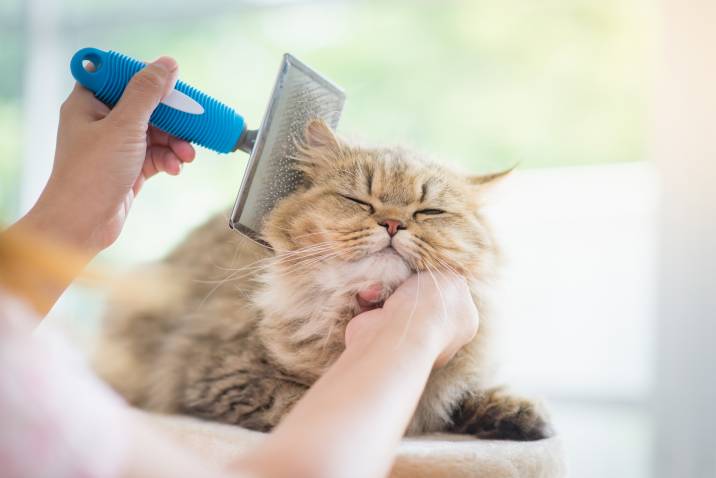
Brushing should be regular maintenance to ensure your cat's coat is tidy all year round. Don't underestimate the importance of brushing as it removes dirt and debris, untangles fur, and spreads healthy natural oil throughout the cat's coat.
A routine brush also makes grooming a lot easier when that time comes, saving you and your cat a lot of time trying to get rid of knotting and matting.
Remember: Always be careful when brushing around your cat's face, chest, and belly. |
How to brush short-haired cats:
Brush once a week
Work in a head-to-tail motion
Use a metal brush to remove loose fur
Use a brush with bristles to remove dead fur
How to brush long-haired cats:
Brush daily
Work upward, starting from the legs and belly
Use a metal brush to remove loose fur
Use a brush with bristles to remove dead fur
Part fur down the cat's spine and tail and brush to each side evenly
Step 2: Detangle or trim your cat's fur
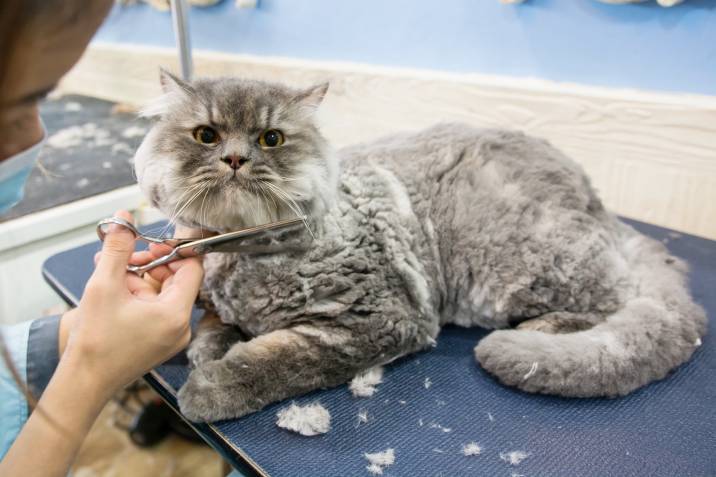
De-matting becomes necessary when you haven't brushed your cat regularly or if your cat likes to get in messy situations. Unfortunately, this is not always easy, as the cat may find the experience unsettling.
If possible, wait until your cat is comfortable and untangle the fur with your fingers. Any lumps of hair you can't save should be trimmed with scissors, making future brushing easier.
As grooming a cat with matted hair can be challenging, a local cat groomer may be the best option. They will also be capable of styling your cat's fur better.
Step 3: Clip your cat's nails
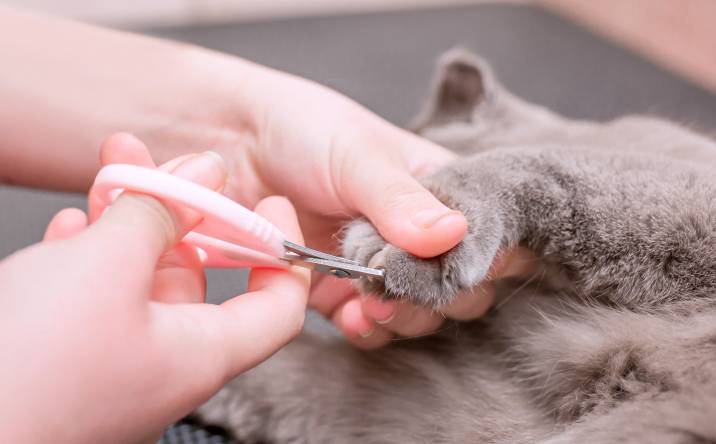
Many cat owners wait until they get a nasty little claw scratch before they remember to clip their cat's nails. However, similar to brushing, the more frequently you clip your cat's claws, the easier they are to maintain. Regular nail clipping also helps your cat get more comfortable with the experience.
It would be best to clip your cat's claws approximately every two weeks; however, how often you cut your cat's nails depends on how fast they grow.
Cat nail clipping is not always easy, so make it a playful one to help your cat feel safe. Giving treats can help make things more relaxed.
How to clip a cat's claws:
Gently apply pressure to the cat's foot until the claws can be seen
Use a nail trimmer that is designed for cat claws
Only cut the white tip of the claw; Never clip the inner pink area as it has blood vessels and nerves
Styptic powder is good to have in case there is an accident and bleeding occurs
Give the cat a treat at completion to acknowledge its good cooperation
Step 4: Clean your cat's ears
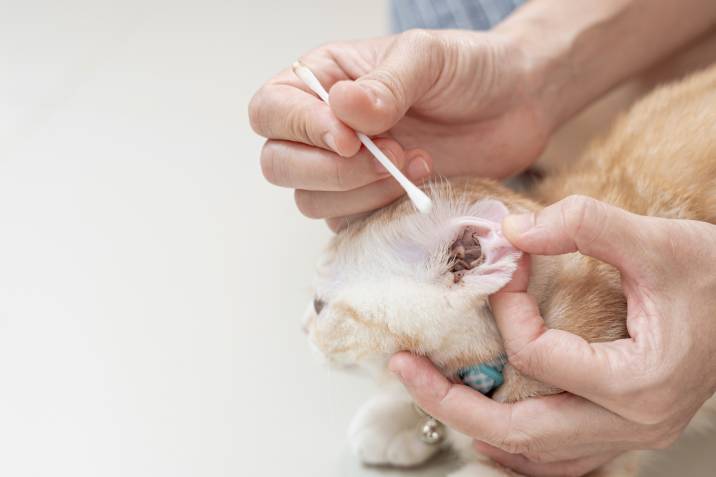
Ear mites are a common disorder among cats; some are more prone to it than others. If you live in a multi-cat household, checking your cats' ears regularly is even more important, as it's easy for this condition to spread. Cleaning your cat's ears should prevent this.
How to clean your cat's ears:
Pour liquid ear cleaning solution onto a cotton ball or cotton bud.
Hold your cat's ear back and wipe on the surface of the outer ear, making sure to remove any visible earwax or gunk.
Move the debris away from the cat's ear and towards the fur.
Dry the ear with soft tissues and discard the earwax.
Be gentle and use a light hand when cleaning your cat's ears. Don't poke inside the ear either, as it might be too sensitive for your cat.
Step 5: Bathe your cat
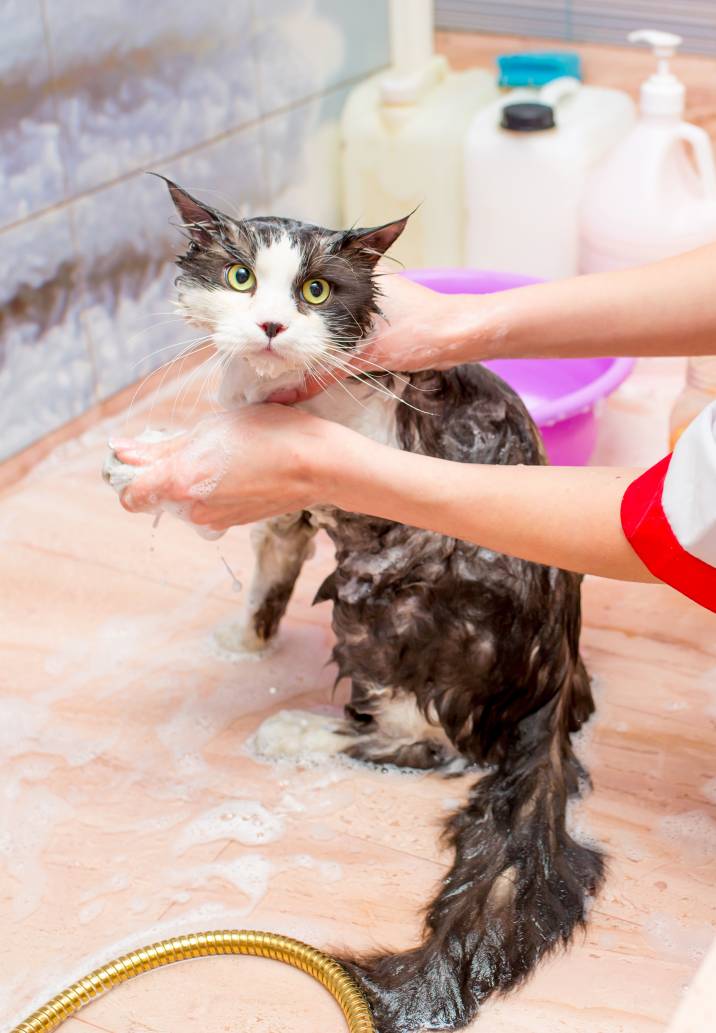
You should wash your cat every four to six weeks. However, there are also other signs to look for that may require bathing sooner. If your cat's coat feels oily, sticky, or smells unappealing, it's best to get them into the bath sooner rather than later.
It's important to find a brand of shampoo suited for cats, and it doesn't hurt to go a step further and find one that suits your cat's fur length for optimum results.
How to bathe a cat:
Brush out as much loose hair as possible to avoid the fur clogging the drain
Put down a mat to help your cat stand on the bath, tub, or sink flooring safely
Fill the tub with warm water. Be sure it's not too hot or cold, as it can harm the cat's skin and make the bathing task more challenging.
Calmly wet your cat using either a hose, jug, or bucket, and be sure to avoid getting water in their eyes, ears, and nose.
Massage a small amount of shampoo through the cat's fur, from the neck to the tail.
Rinse all the shampoo from the cat's fur, avoiding the face.
Dry your cat thoroughly and let them rest somewhere warm.
Step 6: Dry your cat
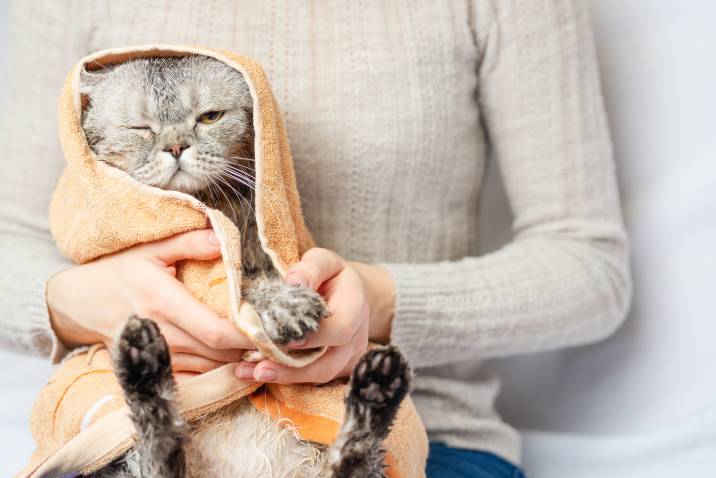
Dry your cat as soon as possible with a large dry towel. A hairdryer on the lowest setting is another good way to quickly dry the wet fur, but only use one if your cat allows it and doesn't seem distressed.
Drying is also an excellent time to check the cat for any irregularities on her skin, like cuts, bumps, and balding. These irregularities may indicate allergies, stress, or other health issues.
Once touch-dry, let your cat rest in a warm room of the house or in the sun to allow its coat and skin to dry completely.
How to dry a cat:
Lay down a large dry towel on a flat surface
Place your freshly washed cat on the towel
Use the towel to dry the cat's fur
If suitable, use a hairdryer on a low setting
Wrap the cat in a large towel to absorb any excess water and warm its coat
Let your cat rest in a warm place
Also read: Cat Care 101 - Tips for grooming your cat at home, grooming an anxious cat, house training, and more. |
It's time to groom your cat
The cat grooming guide above is all you need to have your cat looking neat, tidy, and fresh. The first few times are always tricky for both the cat and the owner. However, over time and with the right tools, you can become a competent home cat groomer in no time.
If you are still unsure about grooming your cat, you can hire a Tasker to do it. Airtasker connects you with all sorts of cat care solutions, including cat sitting and cat boarding services, so post a task today!
FAQs on how to groom a cat
Even though cats are known to self-groom, they still need periodic grooming, including brushing, de-matting, trimming, bathing, drying, and claw clipping. Thorough grooming stimulates the skin to produce oil which helps strengthen their furry coat. Grooming also removes loose hair and dirt and leaves your cat clean to avoid infection and illness.
Whether you groom a cat at home or take it to the groomer, a cat should be fully groomed every four to six weeks. If you decide to take your cat to a groomer, discuss the best grooming maintenance schedule with them, as it will vary depending on your cat’s fur length, age, and domesticated lifestyle.
Persian cat grooming at home is not too different from the step-by-step guide above, following the long hair cat beushing instructions. Use a wide-tooth comb to catch any missed tangles and matted fur for the best final brushing results. Alternatively, you can always hire a cat groomer who specializes in grooming Persian cats.
You should try to groom your cat when it is relaxed, which depends on its routine, lifestyle, and behavior. After a few trials, you will soon know if they are not in the mood or are distressed, which may mean you need to try again another day until you find the perfect time for all.
Find cat groomers, fast
Find a cat groomer
Related articles
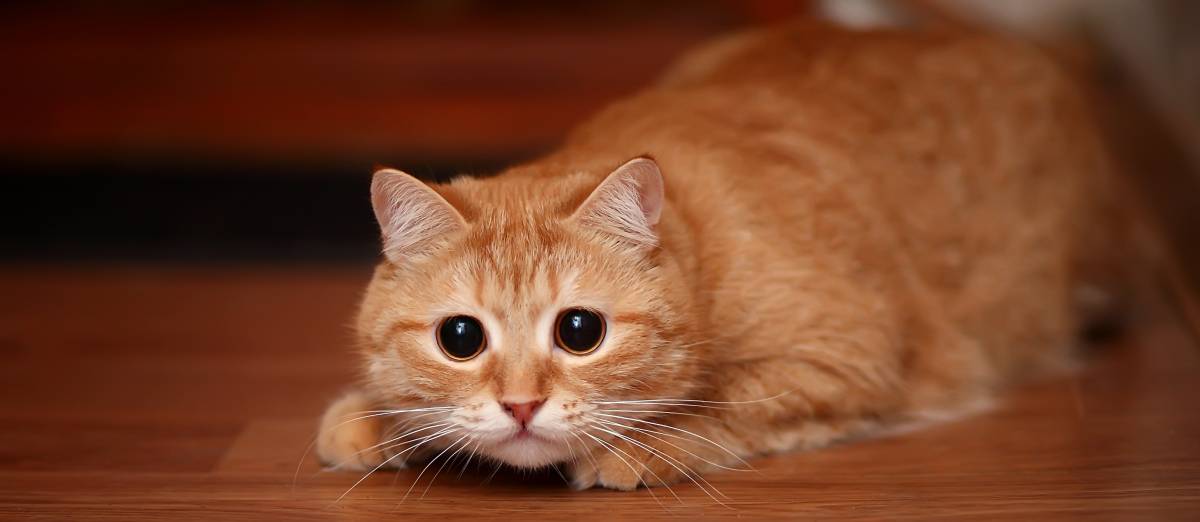
Grooming tools for anxious cats
Read more
Related price guides
